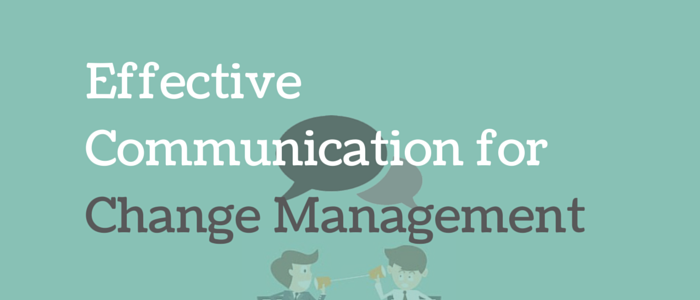Our company is poised towards a big growth phase. I began to think how I can assist in implementing transformative changes without disrupting the workflow for my team members. Strategic planning implementation is at the heart making change happen in any kind of organization. So, why should my organization want to embark on a strategic planning process and implementation? Answer - I want to be one of those organizations, in which employees not only understand the mission and goals but play a key role in creating them as well. Considering this as my goal, I came to the conclusion that this seems like a good reason to start strategic planning implementation. I started by examining the keys needed for effective or rather successful strategic planning implementation. And this is what I came up with:

- Organizational communication for the need of change management
- Complete and affirmative executive leadership support
- Open and effective communication
- 100% employee involvement and participation
- Thorough organizational planning and 360 degree competitive analysis
I feel that implementing strategic planning in an organizational environment that is already employee-oriented, with a high level of trust, gives the process an added boost. An additional plus would be organizations that already think strategically. I would like to address the first point today – Effective Organizational Communication. I am sure we all have heard this a thousand times before; you cannot over-communicate when you are asking your organization to change. Every successful executive, who has led a change management effort, makes this statement. It is vital to ensure that your employees are completely happy with communication. Communication is one of the toughest issues in organizations and effective communication requires four components working perfectly as “shared meaning or one meaning”. These components are:
- The individual sending the message must present the message clearly, in detail and should exude reliability and genuineness
- The person receiving the message must decide to either listen or ask questions for clarity, and above all be able to trust the sender of the message
- The delivery method chosen must suit the circumstances and the needs of both the sender and the receiver
- The content of the message has to reverberate and associate, on some level, with the pre-fixed beliefs of the receiver
Once we organizations get this right, functioning as a symbiotic organism will become second nature. Ok so that is the ‘IDEAL’ what about now? I started by writing down all the points, thoughts that would and will result in Effective Organizational Communication for managing this change. It is vital that we communicate consistently, frequently and through multiple channels. These can be speaking in an all-organization meeting, writing informative mails/ internal newsletters, creating videos, focus groups, bulletin board posts, and posts on intranets, among others. Communicate all that is known about the changes that have been thought of as quickly as the information is available. Provide significant amount of time for people to ask questions, request clarification and provide inputs. Ensure that key people are available to document questions, responses and suggestions that come forth after the communication is gone out. Clearly communicate the vision, the thought process and the objectives of the change management effort. Help people to understand how these changes will affect them personally. (If one does not assist with this process, people will make up their own stories and these are usually more negative than the truth.)
You need to recognize that true communication is a “conversation.” It is a two-way street with the result of a real discussion between people. It cannot be just a presentation. The change leaders or sponsors need to spend time conversing one-on-one or in small groups with the people who are expected to make the changes. Openly discuss the reasons for the changes in such a way that people understand the context, purpose and, above all, the need. Provide answers to questions only if you know the answer. Leaders destroy their credibility when they provide incorrect information or appear to stumble or back-peddle, when providing an answer. It is much better to say you don’t know and that you will try to find out.
Leaders need to listen
Avoid getting defensive, making excuses and answering too quickly (always think before you speak). Act thoughtfully. Make leaders and change sponsors available, daily when possible, to mingle with others in the workplace. Hold interactive workshops and forums in which all employees can explore the changes together, while learning more. Use training as a form of interactive communication and as an opportunity for people to safely explore new behaviors and ideas about the change and how to manage it. All levels of the organization must participate in these sessions. Communication should be proactive. Once the rumor mills are in action, the organization has waited too long to communicate. Provide opportunities for people to network with each other, both formally and informally, to share ideas about change and change management. Publicly review the measurements that are in place to chart progress in the change management and change efforts. Publicize rewards and recognition for positive approaches and accomplishments in the changes and change management.
And above all celebrate each small win/gain publicly.







